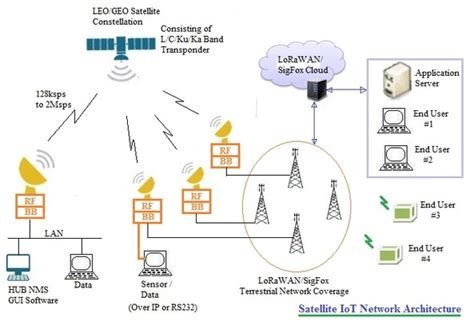Introduction to RF-IoT-Basics
The Internet of Things (IoT) has revolutionized the way we interact with devices and collect data from our surroundings. At the heart of IoT lies the radio frequency (RF) communication that enables wireless connectivity between devices. Understanding the basics of the RF signal chain and link budget is crucial for designing and deploying efficient and reliable IoT systems.
In this article, we will dive into the fundamentals of RF signal chain and link budget, focusing on their application in IoT. We will explore the key components of the RF signal chain, discuss the importance of link budget analysis, and provide practical insights for optimizing IoT wireless communication.
RF Signal Chain Overview
What is an RF Signal Chain?
An RF signal chain represents the path that a signal follows from the transmitter to the receiver in a wireless communication system. It encompasses all the components and stages that the signal goes through, including amplification, filtering, mixing, and antenna transmission/reception.
Key Components of an RF Signal Chain
-
Transmitter (Tx)
The transmitter is responsible for generating and modulating the RF signal that carries the data to be transmitted. It consists of the following sub-components:
- Baseband Processor: Generates the digital data to be transmitted.
- Modulator: Converts the digital data into an analog signal suitable for transmission.
-
Power Amplifier (PA): Amplifies the modulated signal to the desired output power level.
-
Receiver (Rx)
The receiver captures the transmitted RF signal and extracts the original data from it. It includes the following sub-components:
- Low Noise Amplifier (LNA): Amplifies the weak received signal while minimizing noise addition.
- Mixer: Downconverts the RF signal to a lower intermediate frequency (IF) or baseband frequency.
- Demodulator: Converts the analog signal back into digital data.
-
Baseband Processor: Processes the received digital data and extracts the useful information.
-
Antenna
The antenna is a critical component that converts the electrical signal from the transmitter into electromagnetic waves for transmission and vice versa at the receiver. The choice of antenna depends on factors such as frequency, gain, directivity, and size constraints.
-
Filters
Filters are used at various stages of the RF signal chain to remove unwanted frequency components and improve signal quality. They help in reducing interference and ensuring the signal remains within the desired frequency band.

Link Budget Analysis
What is Link Budget?
Link budget is a quantitative analysis of the RF signal power as it travels from the transmitter to the receiver. It takes into account the gains and losses encountered by the signal throughout the RF signal chain. The purpose of link budget analysis is to ensure that the received signal strength is sufficient for reliable communication.
Key Parameters in Link Budget
-
Transmit Power (Pt)
Transmit power refers to the power level of the signal at the output of the transmitter. It is usually expressed in dBm (decibel-milliwatts) or Watts.
-
Antenna Gain (Gt and Gr)
Antenna gain represents the ability of the antenna to focus the transmitted signal in a specific direction (for transmit antenna, Gt) or to capture the incoming signal effectively (for receive antenna, Gr). It is measured in dBi (decibel-isotropic).
-
Path Loss (PL)
Path loss quantifies the reduction in signal power as it propagates through the wireless channel. It depends on factors such as distance, frequency, and the environment (e.g., free space, urban, indoor).
-
Receiver Sensitivity (Prx)
Receiver sensitivity is the minimum signal power required at the receiver input for reliable detection and demodulation of the signal. It is expressed in dBm and determines the maximum allowable path loss for a given transmit power.
Link Budget Equation
The link budget equation can be expressed as follows:
Prx = Pt + Gt + Gr - PL
Where:
– Prx: Received power (dBm)
– Pt: Transmit power (dBm)
– Gt: Transmit antenna gain (dBi)
– Gr: Receive antenna gain (dBi)
– PL: Path loss (dB)
By calculating the link budget, designers can determine the maximum range, data rate, and reliability of the IoT wireless communication system.

Optimizing IoT Wireless Communication
Factors Affecting RF Performance in IoT
-
Frequency Selection
The choice of operating frequency is crucial in IoT applications. Lower frequencies (e.g., sub-GHz) offer better penetration and range but have limited bandwidth. Higher frequencies (e.g., 2.4 GHz, 5 GHz) provide higher data rates but have shorter range and are more susceptible to obstacles.
-
Antenna Design
Proper antenna design is essential for efficient RF performance. Factors such as antenna type (e.g., dipole, patch), size, and placement significantly impact the antenna gain, directivity, and overall system performance.
-
Power Management
Power consumption is a critical consideration in IoT devices, especially for battery-operated nodes. Techniques such as duty cycling, sleep modes, and adaptive transmit power control can help optimize power usage and extend battery life.
-
Interference Mitigation
IoT devices often operate in crowded RF environments with multiple wireless technologies coexisting. Implementing techniques like frequency hopping, spread spectrum, and proper channel selection can help mitigate interference and ensure reliable communication.
Best Practices for IoT RF Design
- Conduct thorough link budget analysis to ensure adequate signal strength and reliability.
- Select appropriate frequency bands based on range, data rate, and regulatory requirements.
- Optimize antenna design and placement for maximum efficiency and coverage.
- Implement power-saving techniques to prolong battery life in IoT devices.
- Use robust modulation and coding schemes to enhance signal quality and resilience.
- Regularly monitor and analyze RF performance metrics to identify and resolve issues promptly.

Frequently Asked Questions (FAQ)
-
Q: What is the difference between transmit power and received power?
A: Transmit power (Pt) refers to the power level of the signal at the output of the transmitter, while received power (Prx) represents the signal power at the input of the receiver after accounting for gains and losses in the RF signal chain. -
Q: How does path loss affect the range of IoT wireless communication?
A: Path loss is the reduction in signal power as it propagates through the wireless channel. As path loss increases with distance, the range of IoT wireless communication is limited. Higher transmit power, antenna gain, or receiver sensitivity can help compensate for path loss and extend the communication range. -
Q: What is the role of modulation in IoT wireless communication?
A: Modulation is the process of encoding digital data onto an analog carrier signal for transmission. In IoT, modulation schemes like FSK, PSK, and QAM are commonly used. The choice of modulation affects the data rate, spectral efficiency, and robustness of the wireless communication system. -
Q: How can I improve the battery life of my IoT devices?
A: To improve battery life in IoT devices, you can implement power-saving techniques such as duty cycling (periodically switching between active and sleep modes), adaptive transmit power control (adjusting transmit power based on link conditions), and efficient protocol design (minimizing unnecessary transmissions and data overhead). -
Q: What are the challenges in designing IoT wireless communication systems?
A: Some of the key challenges in designing IoT wireless communication systems include limited power and computing resources of IoT devices, interference from coexisting wireless technologies, varying environmental conditions affecting signal propagation, and ensuring security and privacy of the transmitted data. Careful design considerations and trade-offs are necessary to address these challenges effectively.
Conclusion
Understanding the basics of RF signal chain and link budget is essential for designing efficient and reliable IoT wireless communication systems. By analyzing the key components of the RF signal chain and performing link budget calculations, designers can optimize the performance, range, and power consumption of IoT devices.
As the IoT landscape continues to evolve, staying up-to-date with the latest advancements in RF technologies, modulation techniques, and power optimization strategies is crucial. By applying the best practices and considering the factors affecting RF performance, IoT developers can create robust and scalable wireless solutions that meet the diverse requirements of IoT applications.
With a solid foundation in RF-IoT-Basics, engineers and system designers can tackle the challenges associated with IoT wireless communication and contribute to the growth and success of the IoT ecosystem.

No responses yet